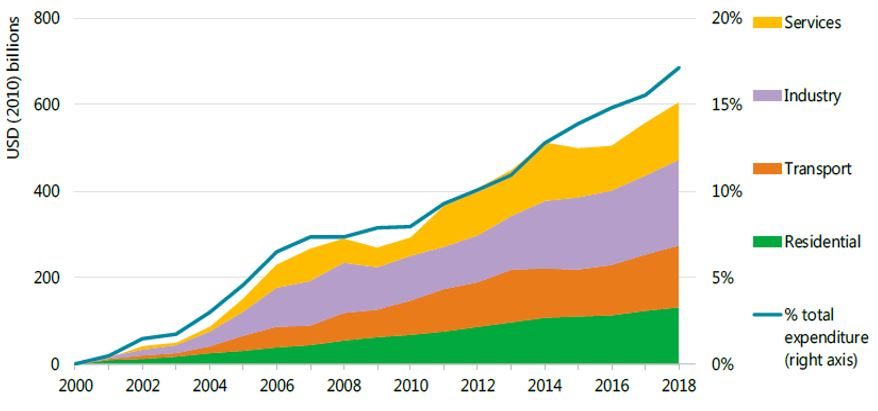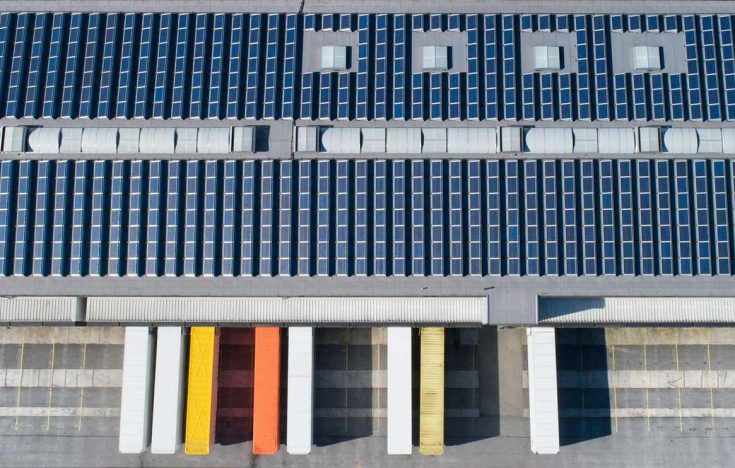Energy efficiency has been and will remain
the largest contributor to reducing greenhouse gas emissions, and is set to
account for 40% of reductions by 2050, according to the International Energy
Agency (IEA). This is why a “community of interest” on energy efficiency was
launched at the Movin’On Digital
Meetings on Sustainable Mobility. The community aims to bring all kinds of
companies together to seek out concrete solutions to accelerate and scale up
energy efficiency measures.

Is this the right time to focus on climate change?
Climate policy specialist Carlo Carraro
set the scene at the dedicated Movin’On session by explaining why we should
not lose our focus on climate change and why energy efficiency measures merit
more effort and investment. He said that although the Covid-19 pandemic and its consequences have changed priorities for many public and private decision-makers, this does not mean the climate crisis has gone away. In the most optimistic of scenarios, if current policies continue, temperatures will have risen by about 3°C by the end of the century compared to pre-industrial times, a level inconsistent with living conditions (due for example to heat, drought and rising sea levels causing flooding). We need to move to a better development path soon – otherwise, the problems we face in the future will be much greater than those caused by the virus today.
Despite the devastating effects of the current crisis, it offers an opportunity for climate change mitigation. Important financial resources will be delivered in the next few months for economic recovery. We need to use these resources properly, and one such use is for the energy transition.
Why is energy efficiency so important?
Thanks to energy efficiency improvements with available technologies:
Energy Efficiency 2018, IEA |
This doesn’t mean that there is no further room for improvement – especially in power and transport. However, the pace of progress has been declining recently, especially in the US but also in Europe. And investment has been stable over the past five years, while it needs to increase. Between $600 billion and $800 billion is needed annually – compared to about $240 billion currently – to achieve the +2°C target. This is substantial but possible, given that about $1,600 billion is spent on energy infrastructure each year.
The main reason investment in energy efficiency makes sense is its returns, both in terms of emissions avoided and of cost savings. Energy efficiency gains in International Energy Agency member countries since 2000 have resulted in $600 billion of savings.

Energy efficiency also increases national energy security by avoiding 10-25% of imports of oil and gas.
A further advantage is that it leads to better air quality. This is particularly relevant right now as there is increasing evidence of a correlation between pollution (PM2.5) and the Covid-19 death rate. This indicates that resisting climate change could also help prepare the fight against future pandemics.
What to do to accelerate and scale up energy efficiency?
Constance Chalchat, Head of Company Engagement for BNP Paribas CIB, emphasised that given the massive potential of energy efficiency, the adoption and scale-up of energy efficiency solutions is critical. This is especially the case given the challenge of fostering a “green” recovery from the Covid-19 crisis.” For the environment, the best energy is the energy we save. ”
Carlo Carraro
The energy efficiency community of
interest launched at Movin’On aims to bring together three types of
stakeholder – energy efficiency “champions” or pioneers, users of solutions,
and innovative companies and startups who are proposing solutions. This new
coalition will use digital and agile ways of collaborating to find concrete
solutions to boost energy efficiency. This could involve innovative
partnerships and also include financing solutions.
The aim is to accelerate revenues for
solutions providers, produce savings for users and use the savings to reinvest
in profitable energy solutions (either via a fund or in each company’s own
“green” projects). And most importantly, this will result in less energy use
and less CO2 emissions for our planet.
Asked why BNP Paribas is interested in
energy efficiency, Constance Chalchat responded that the Bank’s mission is to
contribute to a responsible and sustainable economy, as per its corporate purpose, which says its
mission is to contribute to a responsible and sustainable economy. The
environmental aspect is key here. This makes energy efficiency a core topic
for the bank, especially in terms of accompanying clients in their journey
towards decarbonisation.
Would your company – however big or small
– like to join the community of interest on energy efficiency?
Contact dl_energy_efficiency.at.bnpparibas.com
| The Movin’On Digital Meetings took place on 3-4 June. The session dedicated to the launch of the community of interest on energy efficiency was presented by Gwen Yu, BNP Paribas CIB Head of Engagement Transformation. Carlo Carraro, Vice-Chair of IPCC WG III, former President of the European Association of Environmental and Resource Economists and Professor of Environmental Economics at the University of Venice, was questioned on energy efficiency by Sébastien Soleille, Global Head of Energy Transition and Environment at BNP Paribas. The community of interest on energy efficiency was introduced by Constance Chalchat, Head of CIB Company Engagement, Marième Rocchi, Head of CIB Company Engagement Projects & Partnerships and Marie d’Argentré, Senior Manager for CIB Company Engagement Projects and Partnerships. |
